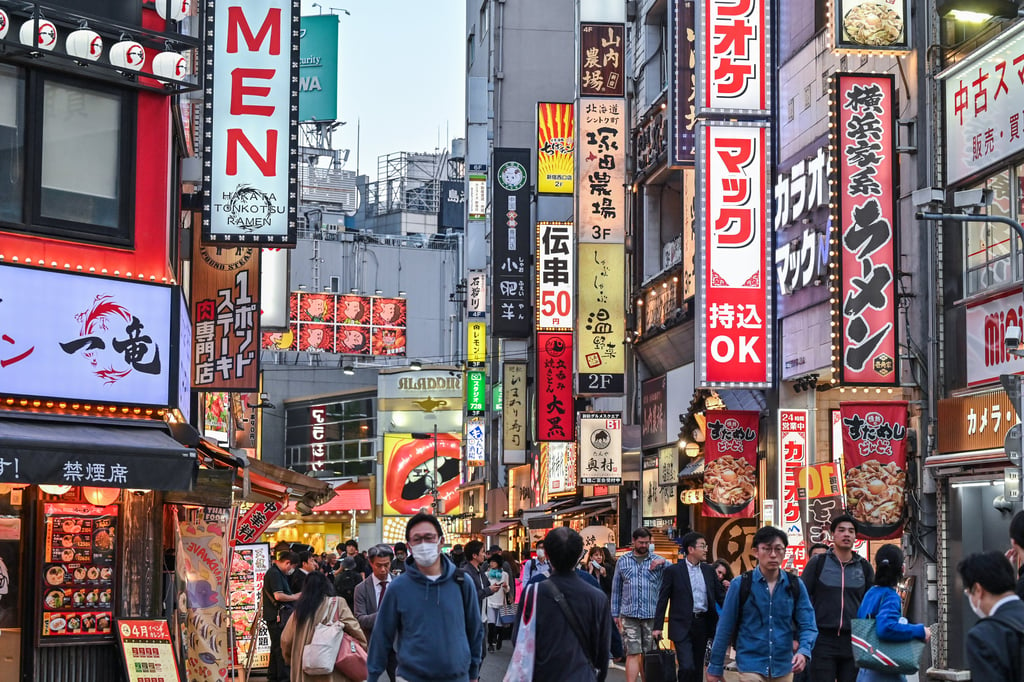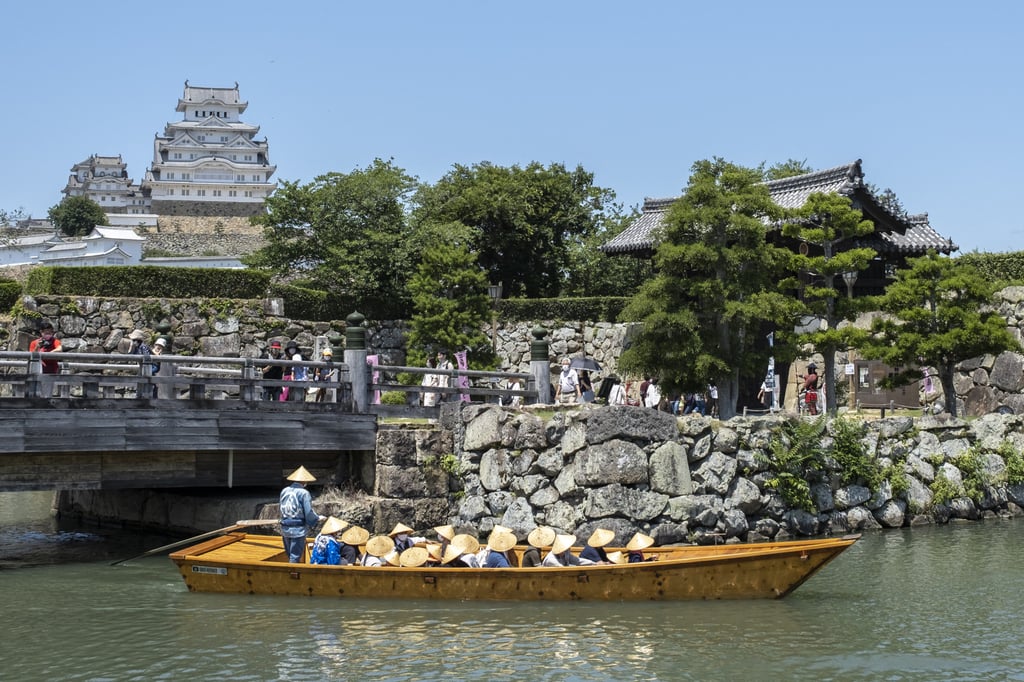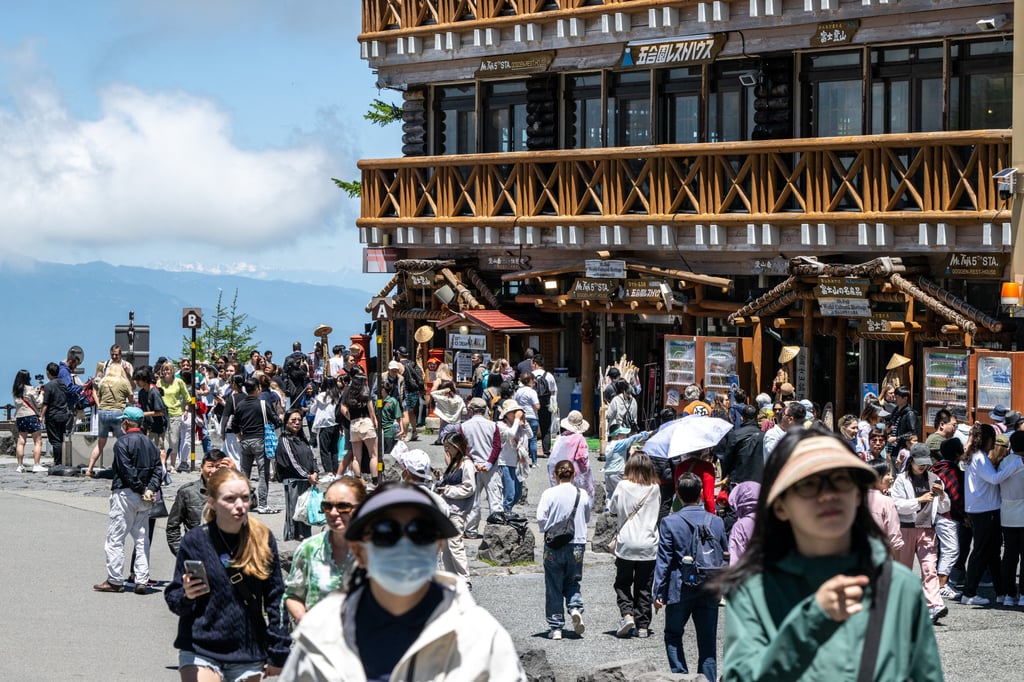“How can we set the same menu price for local Japanese-speaking people and for foreign tourists, who require special help in English?” said Shogo Yonemitsu, owner of buffet-style seafood restaurant Tamatebako in the bustling Shibuya district in Tokyo.
Since its opening in April, the restaurant has charged foreign tourists 7,678 yen (US$49) for an all-you-can-eat and drink seafood buffet for a weekday dinner, while Japanese and foreigners living in Japan can have the same meal for 1,100 yen less.
Yonemitsu said the restaurant has had to increase wages to hire English-speaking staff and also faces costs training them to serve foreign customers.
“Given that we have 100 to 150 customers a day while the restaurant has 35-seat capacity, every second is like a war. No matter how we do it, it takes more time to attend to a foreign customer, such as to explain how the buffet works, how to grill and eat the food, all in English,” Yonemitsu said.

Tamatebako’s approach is also about retaining local customers, Yonemitsu said, noting they still account for 80 per cent of those who walk through the door.
“I think imposing the extra costs created by foreign tourists on locals would be unfair,” he said on why he has avoided raising overall menu prices for all, as some other operators have done.
A Japanese woman who works at a Thai restaurant in Tokyo and visited the restaurant with three colleagues from the Southeast Asian country welcomed the system, calling it a “good deal”.
“I heard from my colleagues that such dual pricing is seen in Thailand’s temples. We were saying, ah, at last Japan has become such a country (in charging more for foreigners),” she added.
Tourists, up to a certain level, it’s good, but when it’s too many, it can be a problem
Operators of popular tourist spots in Japan are also weighing the option of charging foreign tourists more as the influx pushes up maintenance and refurbishment fees.
The admission fee for the castle, also a national treasure with part of its wooden structure dating back to the early 17th century, is currently set at 1,000 yen for those aged over 18.
But the mayor said the city would like to charge around US$30 for foreigners and around US$5 for residents. He said while too many visitors could damage the castle’s upkeep, he wants to avoid raising the admission fee for Japanese residents, who see the castle as “a place of rest”.

Experts say businesses and attraction operators who charge foreign tourists more should be careful to explain their reasoning and vision.
“Abruptly changing the price due to short-sighted thinking that foreigners can afford it on the back of the yen’s fall could invite scepticism,” said Tomoya Umekawa, a professor at Kokugakuin University who specialises in tourism policy.
“Operators, if they need to raise prices due to the higher costs in attending to foreigners, should promote services in a way that would convince travellers it is worth the price,” such as by adding “special and authentic experiences”, he said.
A survey on dual pricing for inbound travellers to Japan, conducted by loyalty point service provider Loyalty Marketing in February showed that nearly 60 per cent of respondents in the country agreed or somewhat agreed with the two-tier system.
But the survey also showed that over half of the respondents were concerned about the negative influence the system could have on inbound travellers.
In a free response section of the survey, respondents called for value-added services if foreign tourists are to be charged more, such as offering services in various languages, guides, enhanced hospitality or special gifts.

Nick Sakellariou, who was visiting Japan from Sweden, said he supports the idea of charging tourists more at a time travellers are visiting Japan at a high pace.
“Tourists, up to a certain level, it’s good, but when it’s too many, it can be a problem,” said Sakellariou, while suggesting that the dual pricing could be introduced depending on the time of the year, such as during the high season.
But he also suggested that if the system were introduced in his home country, it would be criticised as “racist” or “discriminatory”.
Other foreign tourist destinations that differentiate between residents and visitors include the Diamond Head state park in Hawaii, where state residents can enter for free while foreign tourists and those from other US states are charged. The move created little outcry.
Price-setting strategies in tourism are now at a crossroads, Kokugakuin University’s Umekawa said, urging businesses and operators to depart from the mindset that they need to keep prices low and offer the same services to both Japanese and non-Japanese customers.
“They should take pride in offering high-quality hospitality services, where costs are sufficiently covered by tourists,” he said. “Such value-added services are in demand by foreign tourists and would contribute to [increasing] repeat visitors.”







